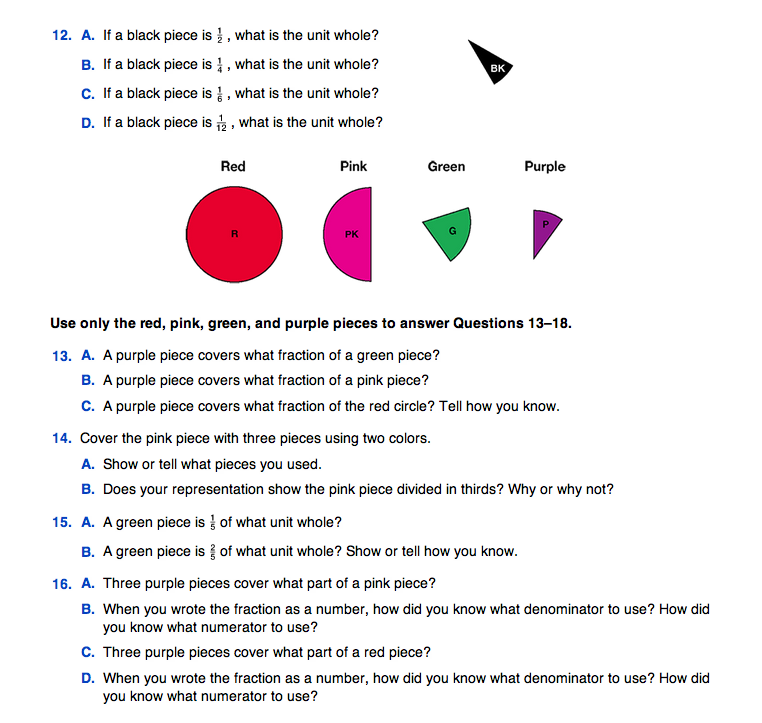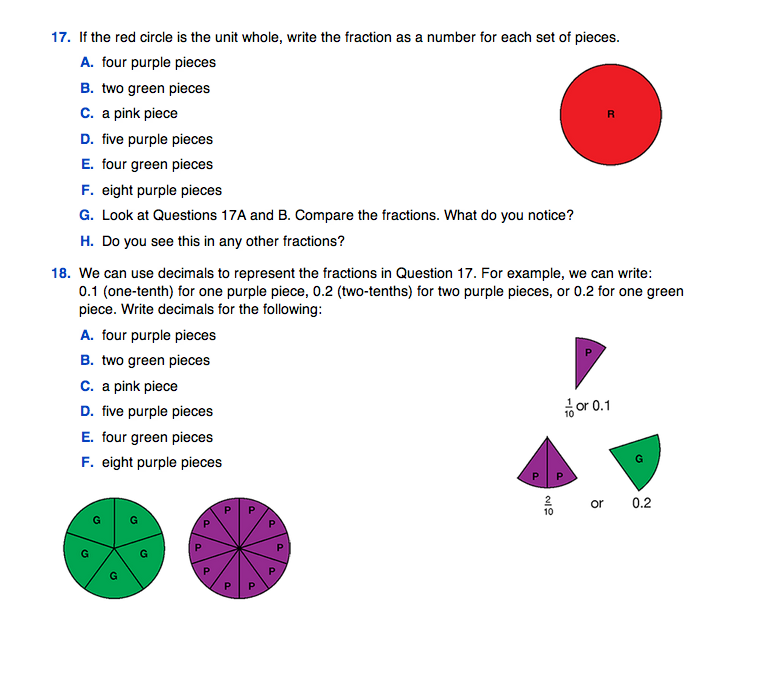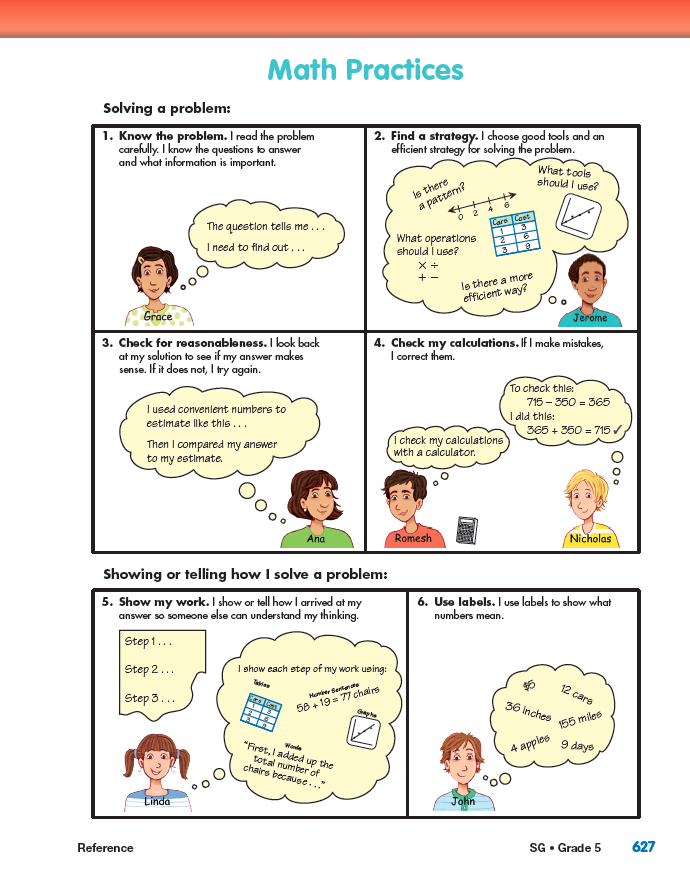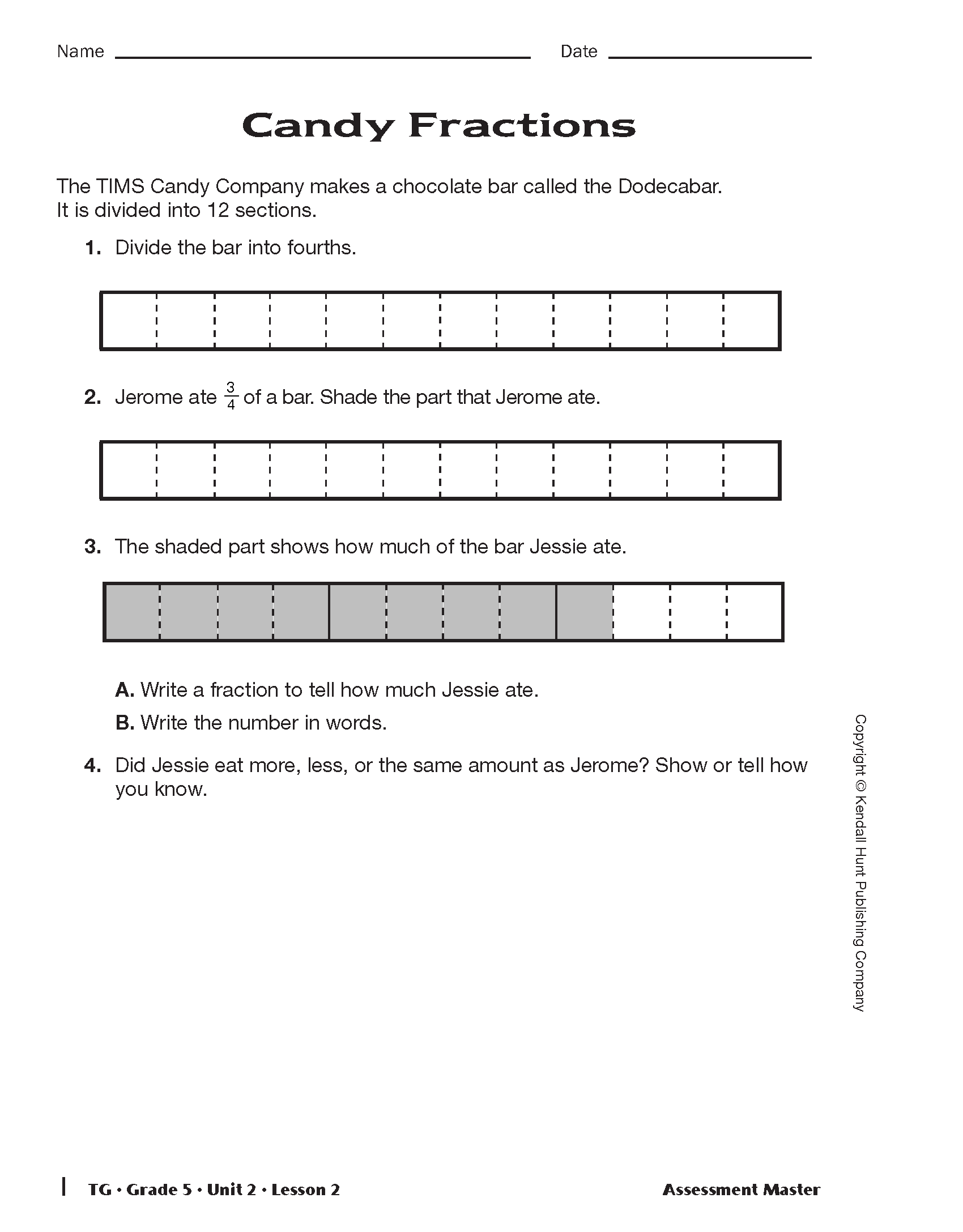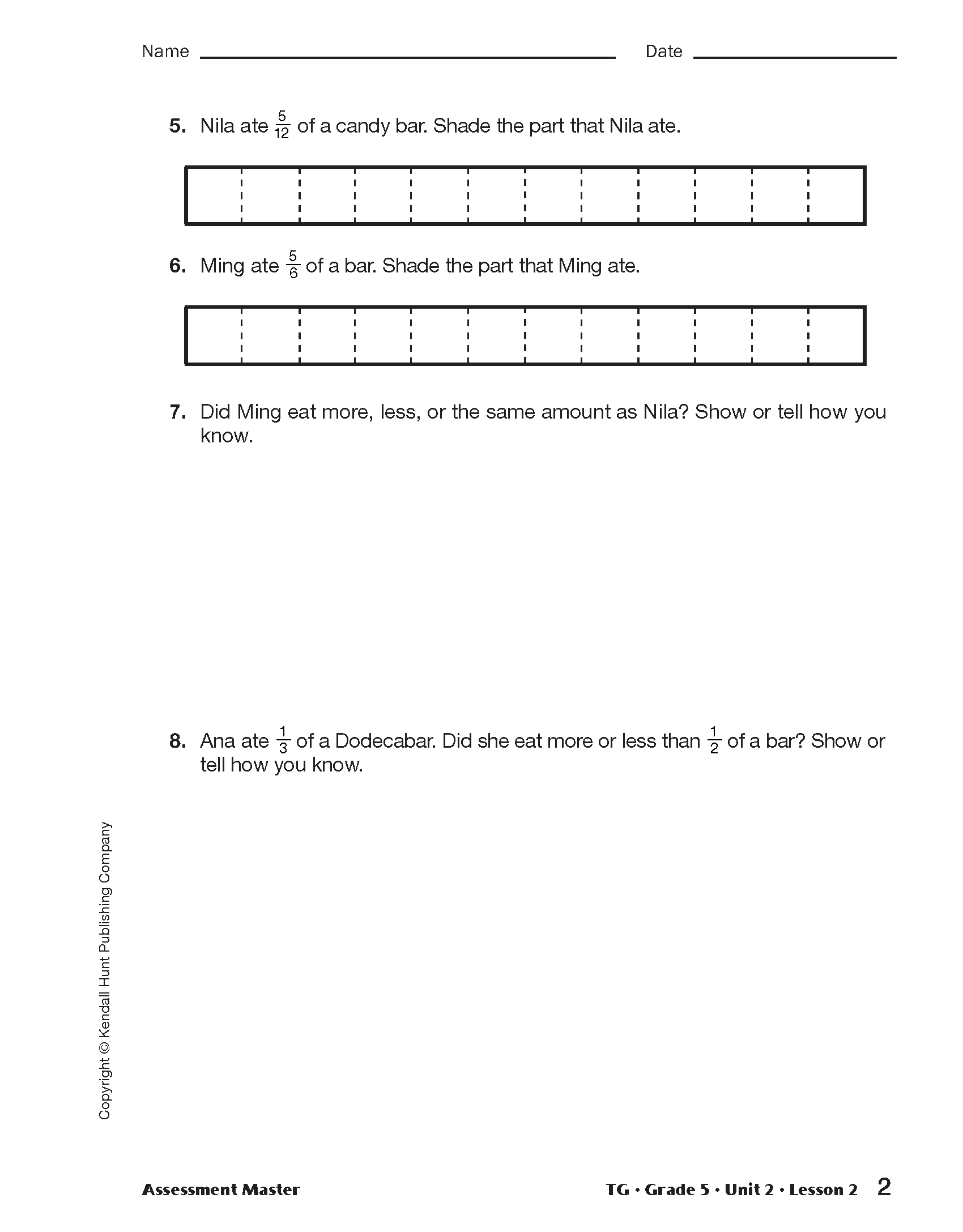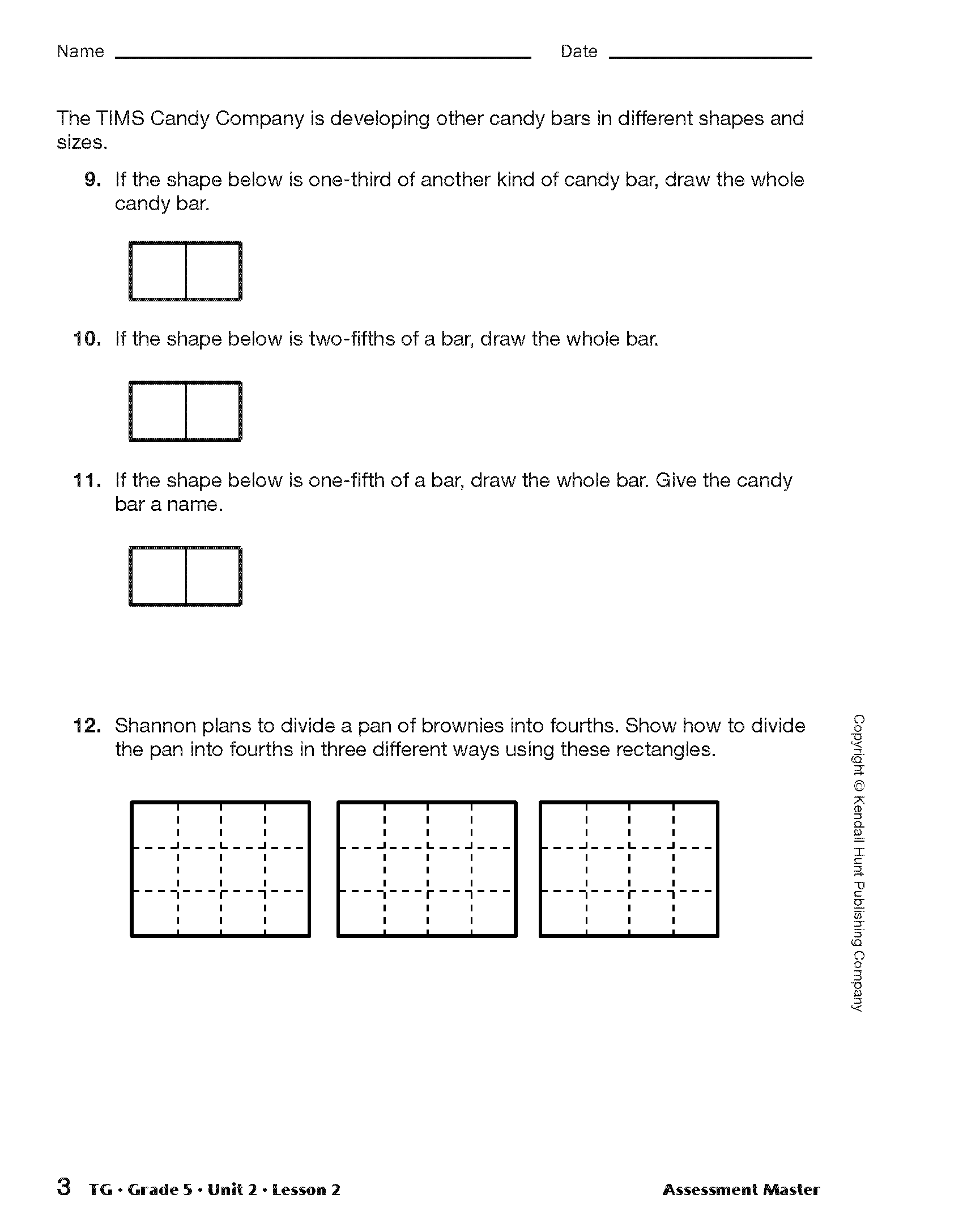Ask students to share their solutions for some of the questions.
As students share their solutions for Questions 9G–H, possible discussion prompts include:
- What did you notice when you used two pinks to cover the red circle? (Possible response: Two pink pieces totally cover the red circle.)
- What numbers did you use to represent two pinks? (2/2 or 1)
- When you write the fraction 2/2, what does the denominator tell you? (Possible response: That the unit whole is divided into two equal size pieces or halves.)
- What does the numerator tell you? (Possible response: You are considering both halves or pieces.)
- When the denominator and numerator are the same number, what do you know about the area you are considering? (Possible response: You are considering all of the pieces in which the unit whole is divided.)
- If the red is the unit whole, what number will three pink pieces represent? (3/2 or 11/2)
- What do you call a fraction in which the numerator is larger than the denominator? (an improper fraction)
- What do you call a fraction in which the denominator is larger than the numerator? (a proper fraction)
- Why is 11/2 called a mixed number? (Possible response: It is a mixed number because it is a whole number and a proper fraction.)
Modify these prompts as needed to discuss other problem solutions for Questions 11–17.
For Question 18 students name fractions for fifths and tenths using decimal representations. As students share their solutions, remind them that decimals can be used as another way to name a number that includes a fraction.
Question 18 in the Student Guide provides an opportunity to make a meaningful connection between fractions and decimals. Students studied decimals in Grade 4 Unit 10 and will continue this study in Grade 5 Unit 8 Decimals.
Distribute the Candy Fractions Assessment Masters in the Teacher Guide to students. Tell students that they are going to apply what they have learned about fractions of circles to fractions of rectangles. Ask students to read the information at the top of the page about the TIMS Candy Company. Explain that dodeca- is a prefix that means twelve. The candy bar in the assessment is a dodecabar because it is divided in 12 sections.
Before students begin the assessment, show a display of the Math Practices page from the Student Guide Reference section. Explain to students that as they work on these problems they will show or tell how they arrived at their solutions so that others can understand their thinking [MPE5].
- What are some of the things you can include in your explanations that will help another person understand your thinking? (Possible response: You can use words and pictures to explain each step in your thinking. You can make sure you answer the questions completely. You can clearly tell what the numbers you are using mean.)
Use the Candy Fractions Assessment Masters and the Feedback Box in the Teacher Guide to assess students' abilities to represent and identify fractions using area models, words, and symbols [E1]; recognize that equal fractional parts of a unit whole are the same size [E2]; identify the unit whole when given a fractional part of a whole [E3]; and compare using area models and benchmark fractions [E6].
You can also use Questions 4, 7, 8, and 12 to assess MPE5, Show my work. I show or tell how I arrived at my answer so someone else can understand my thinking.















